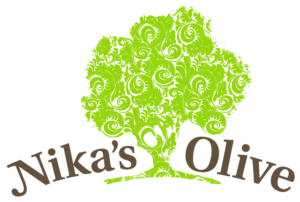Olive Oil

There is also a lot of information about poor olive oil quality, scams, and adulteration. It is major big business! I do not recommend Olive Oil purchased at Sam’s Club, Costco, and many other retailers. These blends of Olive Oil from Europe give me high concern for poor quality.
My recommendation is to get your olive oil from southern California. They maintain some of the highest standards around! The company I personally use is Nika’s Olive. They’ll ship it straight to your house. They have a bunch of different options but if you want just plain ole olive oil then go for the Arbosana Ultra Premium Olive Oil.
I recommend at least 2 tablespoons per day but it is better to go with 4 tablespoons per day, especially if you have cardiovascular issues or hypertension.
Here is how you can get your 4 tablespoons per day of Olive Oil:
- drink it out of the bottle
- cook with it (less than 450 degrees)
- use it as salad dressing
- combine it in a shake/smoothie
It doesn’t matter HOW you get it in, just get it in!
******This portion of the post is under development*******
Reduces arterial stiffness, endothelial dysfunction, and CVD.
A study of 23 hypertensive subjects in DBRCO study for 6 months – Extra virgin olive oil vs. sunflower oil
- Significant reduction in blood pressure – 8/6 mmHg in hypertensive patients (P <0.05 and <0.01)
- Reduces need for antihypertensive drugs in 48% of hypertensive patients vs 4% in the control group (P <0.005)
- Reduces blood pressure in type-2 diabetes (clinic and 24-hour ambulatory blood pressure)
- No reduction of blood pressure in normotensive or non-diabetic patients
Extra-Virgin Olive Oil reduces blood pressure
- DBRC crossover study with 31 hypertensive, elderly patients
- EVOO 40 grams per day vs sunflower oil for 4 wks, then 4 week washout, then 4 week crossover.
- Systolic blood pressure (SBP) reduced from baseline to 136 +/- 10 mmHg with EVOO vs 150 +/- 8 mmHg with sunflower oil (P<0.01)
- Seven other human clinical trials with 368 patients show similar results
- The systolic blood pressure is usually reduced better than diastolic but depends on the total phenol content.
- Conclusion: EVOO with a total phenol content of at least 161mg/kg at 20-40 grams (2-4 tablespoons) per day will significantly decrease blood pressure in about 3 weeks. EVOO with 300 mg/kg of total phenols may also decrease diastolic blood pressure.
Olive Oil polyphenols and blood pressure
- 24 women with Stage 1 hypertension (by the old standards by the way) in a double-blind, crossover study with polyphenol-rich olive oil 30mg per day for 2 months with a 4 week washout
- Oleic acid and other polyphenols are responsible for BP reduction
- Blood pressure reduction of 7.91/6/65 mmHg
- Decreased ADMA
- Decreased oxLDL
- Decreased hsCRP
- Increased plasma nitrates and nitrites (good for nitric oxide)
- Improved FMD and endothelial dysfunction
A Mediterranean diet supplemented with extra virgin olive oil or nuts improves endothelial markers involved in blood pressure control in hypertensive women.
- Serum nitric oxide (NO) reduction and increased endothelin-1 play a pivotal role in endothelial dysfunction and hypertension
- Non-smoking women with moderate hypertension were submitted for 1 year to interventions promoting adherence to the TMD, EVOO, and the other with nuts versus a control low-fat diet (30 participants per group). Blood pressure, nitric oxide, and endothelin-1 and gene expression as well as oxidative stress biomarkers were measured.
- Results: Serum nitric oxide and systolic blood pressure or diastolic blood pressure were negatively associated at baseline as well as between nitric oxide and Endothelin-1. Diastolic blood pressure reduction occurred with both interventions. A negative correlation was observed between changes in nitric oxide metabolites, concentration, and systolic blood pressure or diastolic blood pressure after the intervention with TMD plus extra virgin olive oil (P=0.03 and P=0.044, respectively).
- Systolic blood pressure reduction was related to impairment of the serum endothelin-1 concentrations after the intervention with TMD + nuts (p = 0.008). there were also changes in endothelial nitric oxide synthase, caveolin-2, an endothelin-1 receptor Gene expression which are related to nitric oxide metabolite levels and blood pressure.
- Conclusions: The changes in nitric oxide and endothelin-1 as well as endothelin-1 receptors gene expression explained, at least partially, the effect of extra virgin olive oil or nuts on lowering blood pressure among hypertensive women.
Olive oil is rich in oleic acid. It is a monounsaturated fatty acid. Extra virgin olive oil contains 5 mg of phenol’s a for every 10 g of oil. 40 g of olive oil is approximately 4 tablespoons. Olive oil increases HDL. LDL cholesterol rich oleic acid is more resistant oxidation. Replacing dietary olive oil with saturated fat significantly increases blood pressure. Olive oil is also the most resistant to oxidation.
References:
- Am J Clin Nutr 2011;93:446 (also 275 & 267)
- Arch IM 2000;160:837-42
- Current Atherosclerosis Reports 2000;2:521-8
- Diabet Med 1995;12:600-6
- J Hypertens 1986;4:407-12
- Arterioscler Thrmob 1992;12:911-19
- J Clin Invest 1993;91:668-76
- J Am Oil Chem Soc 1991;68:669-71
- Clin Nutr 2004;23:1113
- J Agric Food Chem 2009;57:11427
- Nutr Metab Cardiovasc Dis 2010;20:284
- Flynn, M and Wang S. Olive Oil as Medicine: The effect on Blood Pressure. The Report of UCD Olive Center. December 2015
- Am J Hypertens 2012;25:1299
- A Mediterranean diet supplemented with extra virgin olive oil or nuts improves endothelial markers involved in blood pressure control in hypertensive women. Eur J Nutr. 2015 Oct 8. [epub ahead of print]






